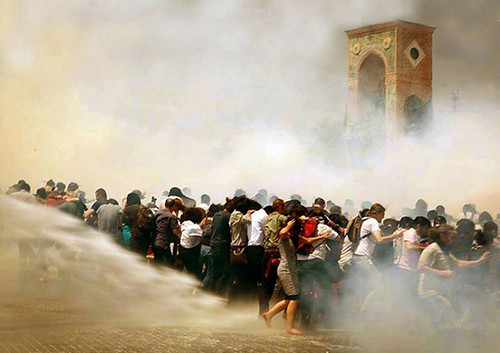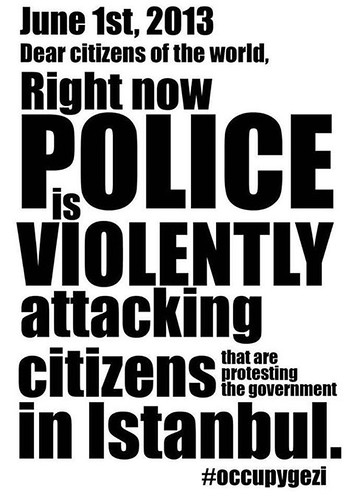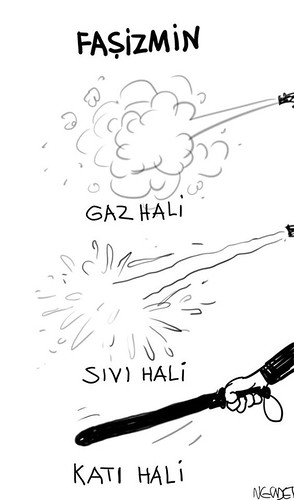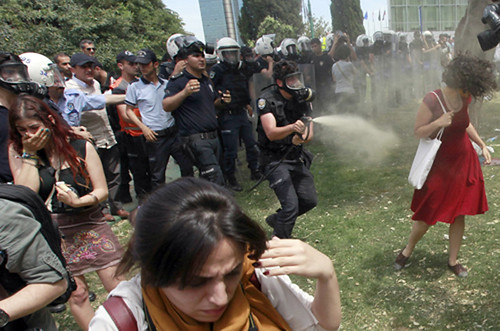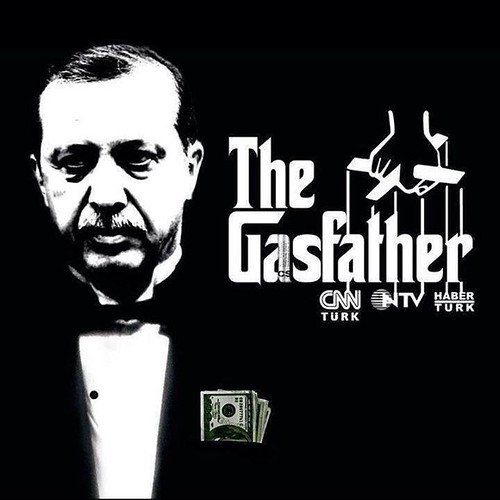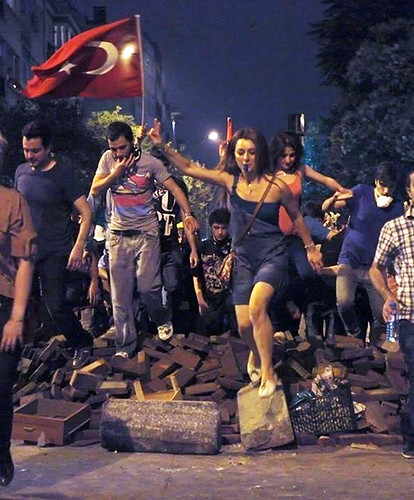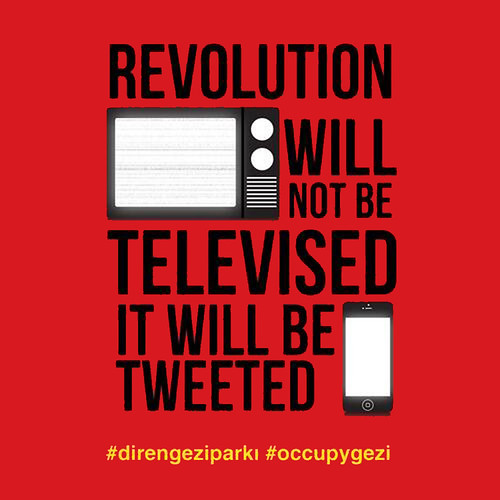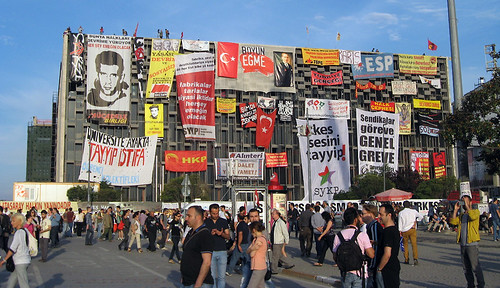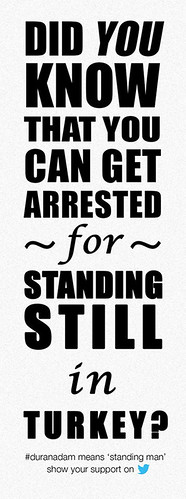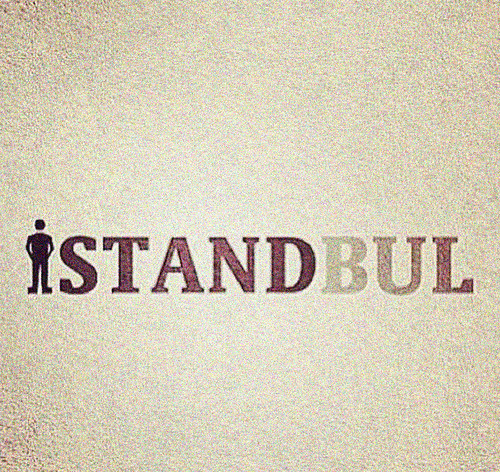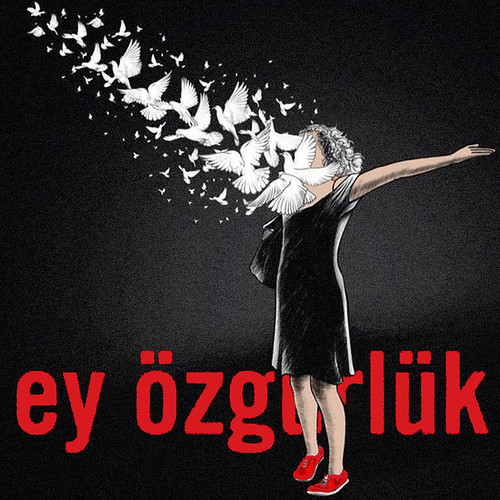Thursday, 5:00pm
4 July 2013
Portrait of a revolution
How social media gave voice to the Turkish people. Gülizar Çepoğlu reports from Istanbul
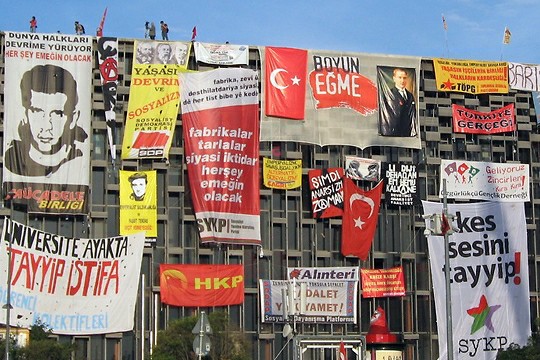
Technology has helped forge rebel into artist … and artist into insurgent, writes Gülizar Çepoğlu. Creativity becomes activism through posters, photographs, videos and slogans.
It is a tribute to the Turkish people that they responded to recent events – to violence, to tear gas and to water cannons – with the humorous ridicule that the regime richly deserves.
While Prime Minister Erdogan was mocked and the Turkish media remained silent, the people turned once more to the founder of the Republic of Turkey and father of their freedoms:
‘Oh, child of Turkey’s future, even in these circumstances it is your duty to save Turkey’s independence and the Turkish Republic’, M. K. Atatürk, 1927.
Turkish youth have awakened and responded. The following chronological photo-essay from Istanbul shows how a small protest – to protect a park – swelled into a national uprising against the tyranny of an arrogant government.
Anonymous photograph from Facebook showing the first attacks.
Top: detail from a photograph of Atatürk Cultural Centre (see below).
On 1 June 2013, this text was tweeted worldwide in order to call out for help. The media was silenced. CNN Turk broadcast a documentary on penguins as attacks were carried out on unarmed and innocent people.
The police fired tear gas, then water cannons, and used their batons to beat protestors: the gas phase, the liquid phase and the solid phase of fascism.
The image of a woman turning from the pepper spray has become the iconic image of Turkey’s protests. Images were widely shared on social media and have inspired cartoons and graffiti across the country and beyond. Photograph by Reuters / Osman Orsal, 28 May 2013, Gezi Park.
The fictional mafia ‘godfather’ is replaced by Erdogan’s likeness. This poster refers to his alleged manipulation of the media, while his pockets overflow with dollars earned from selling off landmarks to build shopping malls. With yet another mall planned for Gezi Park, and inspired by capitalist Islamic countries such as Saudi Arabia, Erdogan is accused of turning Istanbul into Disneyland.
Chapulling is a newly coined word invented when Erdogan used the word çapulcu (looter) to describe the protesters. People on social media sites adapted this word to English and gave it a new meaning: ‘fighting for one’s rights.’
The Turkish Prime Minister said: ‘Now we have a menace called Twitter. To me, social media is the worst menace to society.’ A lawyer who was present at the Gezi Park protests since the beginning said: ‘We use social media because it is the only thing we can use to show people what is really happening.’
Turkish vernacular language shines through anti-government slogans covering the Atatürk Cultural Centre, announcing a revolution and a breakthrough in communication.
Erdem Gunduz stood in a silent, eight-hour vigil at Taksim Square on 17 June 2013. He inspired hundreds of others to follow his passive resistance all around Turkey and the world, including London followers.
Duran adam means ‘a man who stands still’, kuduran adam means ‘a man who is in rage’. This image creates a contrast between the passive protester and the raging, defiant prime minister.
The woman in the dress became a hero during the Gezi Park protests after standing in front of a pressurised water cannon. Kate Mullen said her move was intended to show how the protests were truly peaceful. The image inspired a myriad of posters, this one showing the violent water turning into white doves of peace. The text on reads ‘Oh! Freedom’.
We have endeavoured to find credits and sources for the images shown in this article. If you can help with further information, please email [email protected].
Gülizar Çepoğlu, editorial designer, researcher and educator, London.
July 2013.
Eye is the world’s most beautiful and collectable graphic design journal, published quarterly for professional designers, students and anyone interested in critical, informed writing about graphic design and visual culture. It is available from all good design bookshops and online at the Eye shop, where you can buy subscriptions, back issues and single copies of the latest issue. You can see what Eye 85 looks like at Eye before You Buy on Vimeo.

